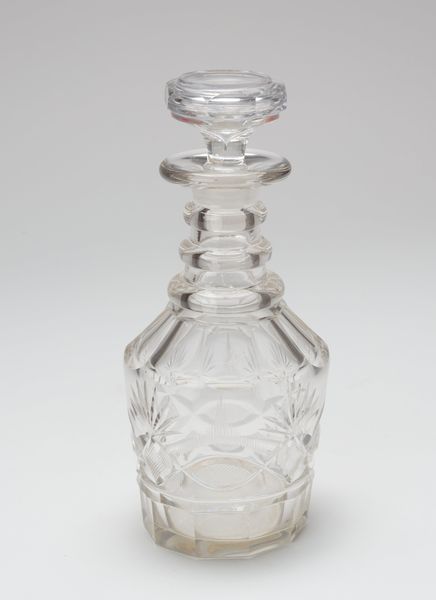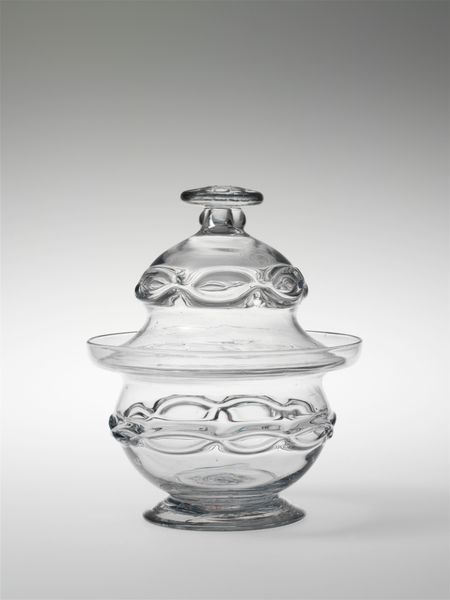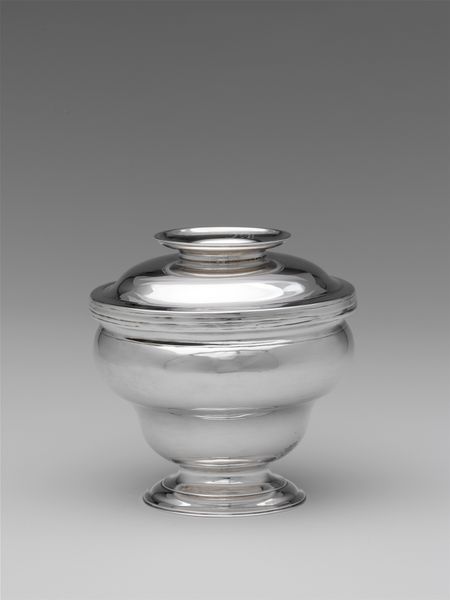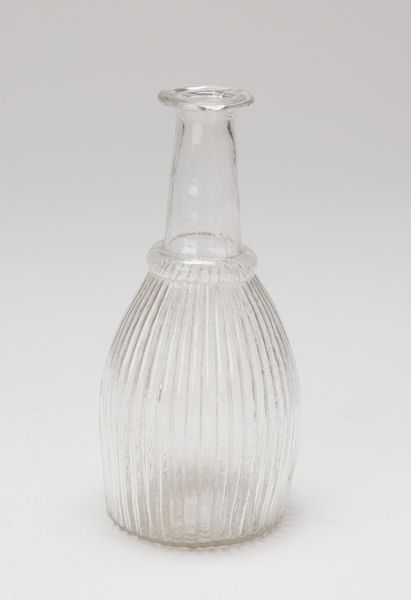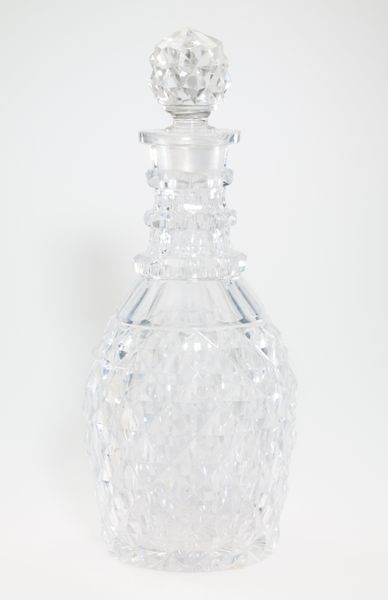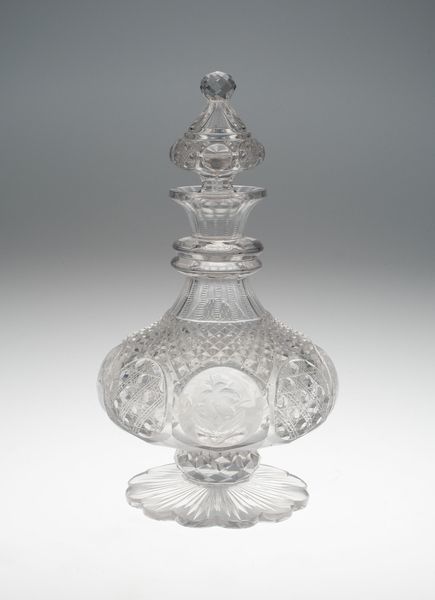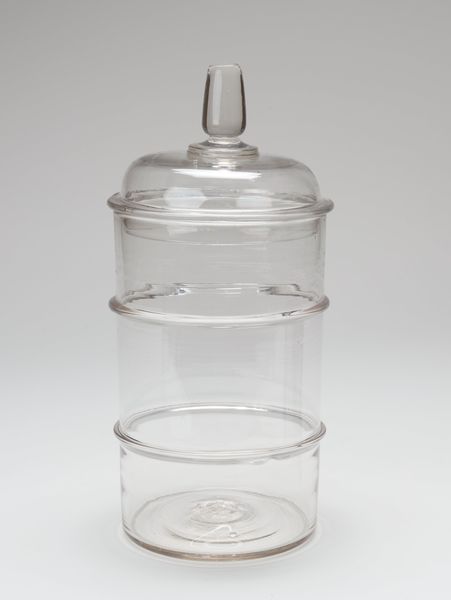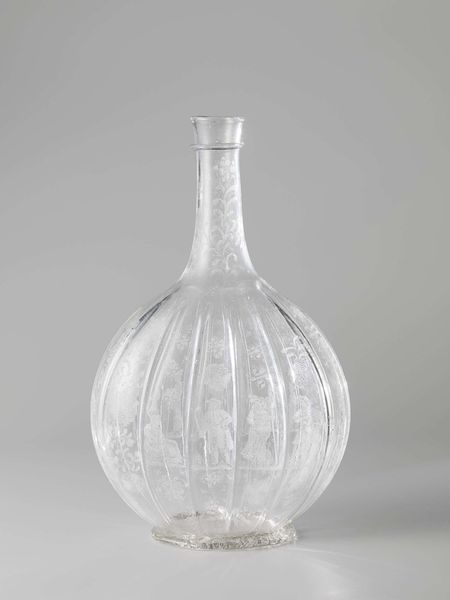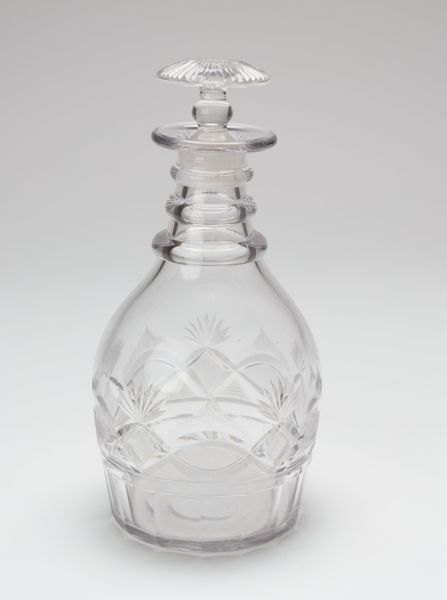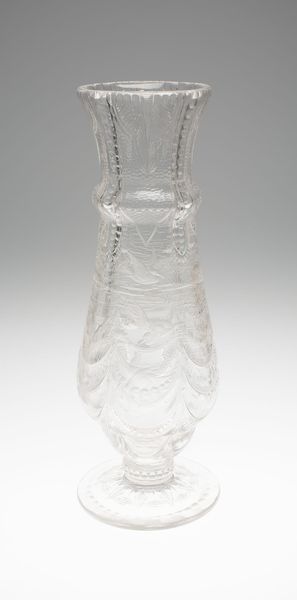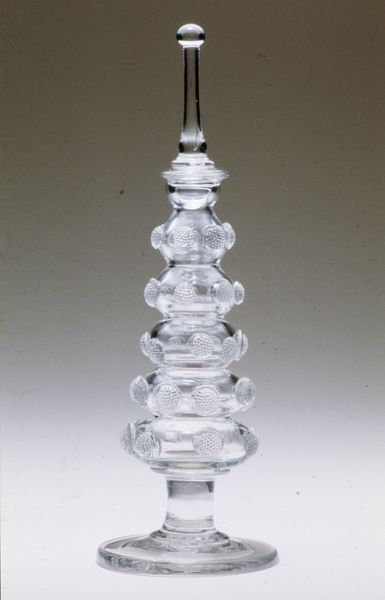
ceramic, glass
#
ceramic
#
glass
#
stoneware
#
ceramic
Dimensions: 9 7/8 x 4 3/8 in. (25.1 x 11.1 cm)
Copyright: Public Domain
Curator: The Sugar Bowl, crafted between 1815 and 1835 by the New England Glass Company, currently resides at the Metropolitan Museum of Art. Editor: Immediately, it strikes me with its pristine clarity. The symmetry is impeccable, a study in balanced forms. Curator: Glass sugar bowls such as this gained popularity during the Federal period in America, a time when refined sugar, imported from the West Indies, became more readily available, symbolizing wealth and status. It reflects a broader shift towards a more sophisticated domestic culture. Editor: It’s a testament to the artisan's skill, shaping something so seemingly delicate from glass, but there is a subtle asymmetry in its structure, and that throws me off somehow. Notice how the lip is wider than its base, or the asymmetry of the decorative patterning—perhaps its handmade aspect is revealing itself. Curator: Those patterned motifs, reminiscent of stylized feathers, echo a common neoclassical design element prevalent in furniture and architecture of the era. Birds and wings were symbols of prosperity, freedom, and upward mobility within American society. Consider the association with angelic messengers or even simply wealth flying one's way. Editor: Interesting point. It feels like the composition seeks a sense of elevation through pure craft and vertical emphasis. And despite being utilitarian, it aims for a regal, almost monumental quality through stacked forms. Curator: Certainly. While functional, the sugar bowl offered opportunities to display genteel taste and social standing in the home, thus aligning household rituals with a desire for refinement. Editor: Looking at the glass material and the specific ridges across the design, one might be reminded that beauty in its clarity sometimes comes from how it manipulates or redirects available light in the room, so in essence this domestic tool would be another source of "enlightenment" in a formal space. Curator: I see it not only as an artful piece, but a tiny glimpse into American domestic rituals, ideals, and aspirations during the early 19th century. Editor: And I see the way the ridges work to highlight the volume of this bowl, offering just enough detail in a translucent shape. Its subtle curves invite us to consider both its physical existence and its social meanings.
Comments
No comments
Be the first to comment and join the conversation on the ultimate creative platform.
